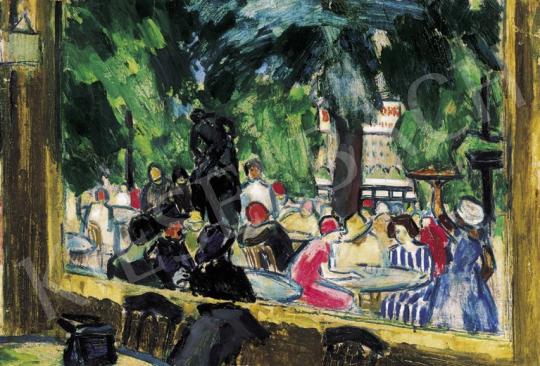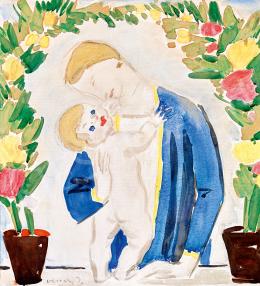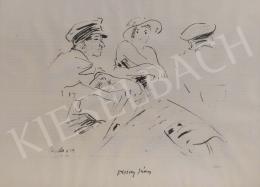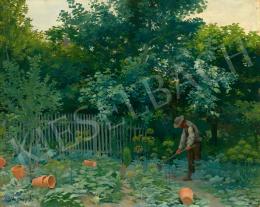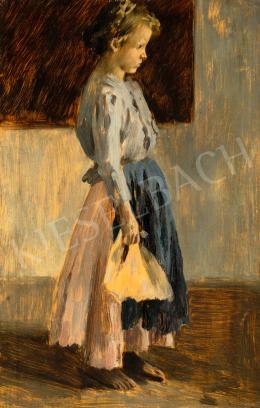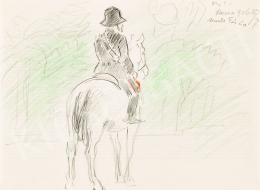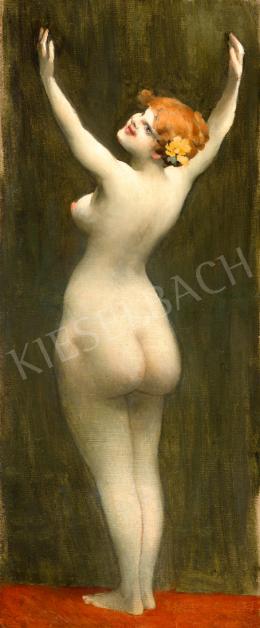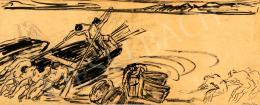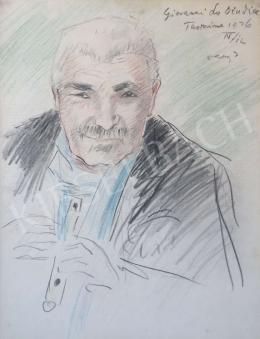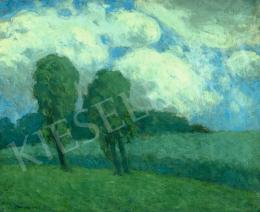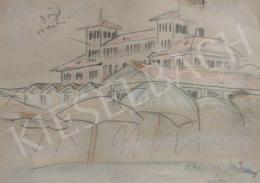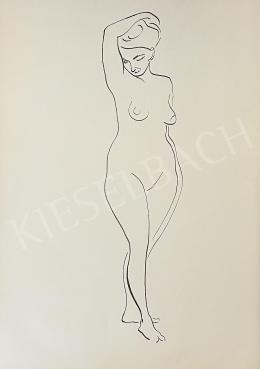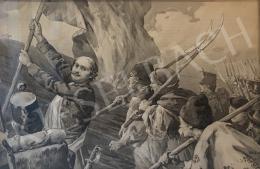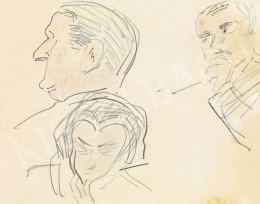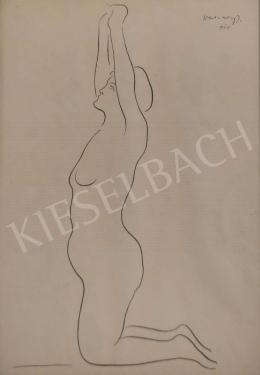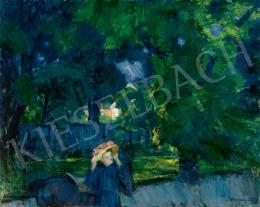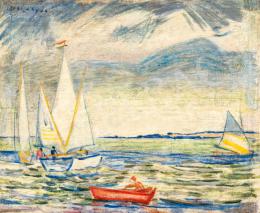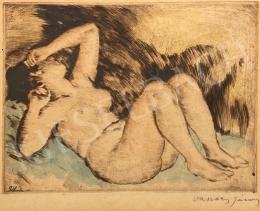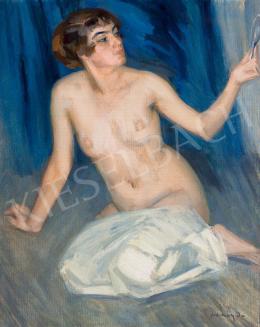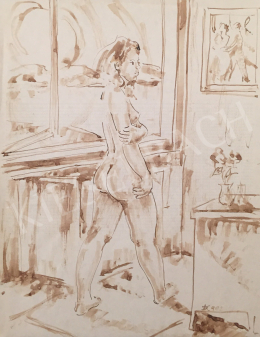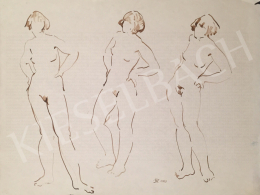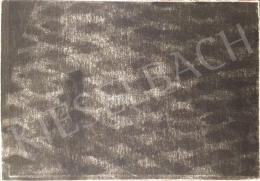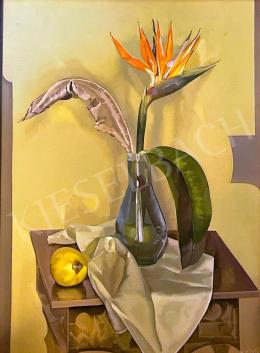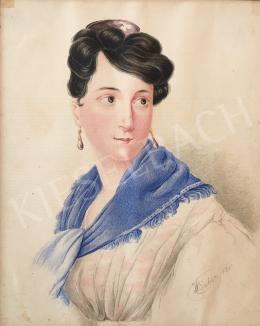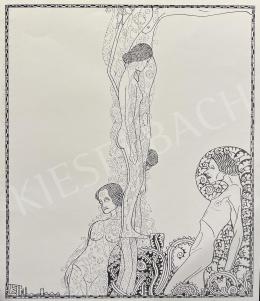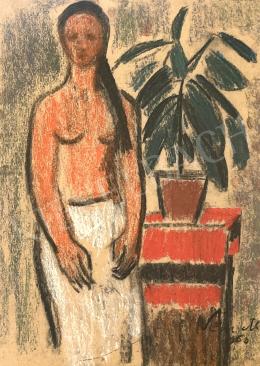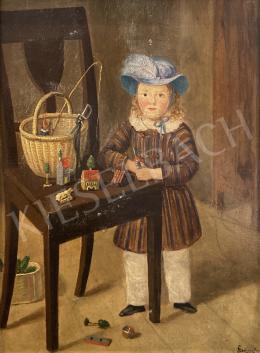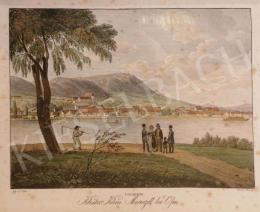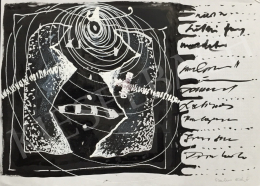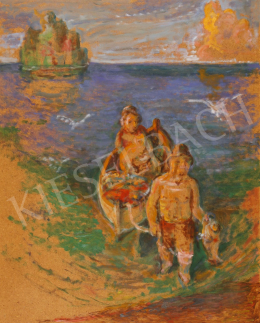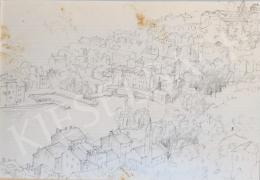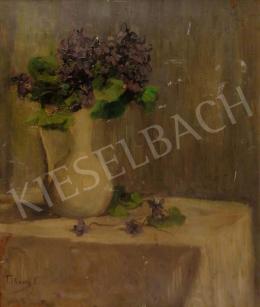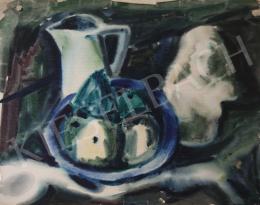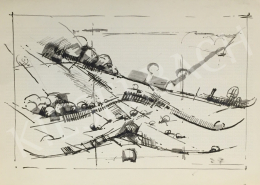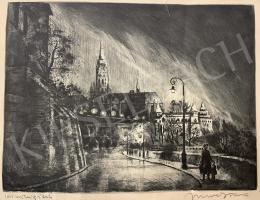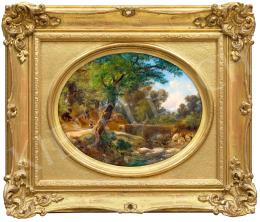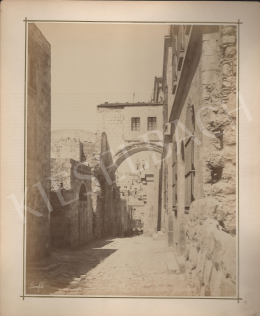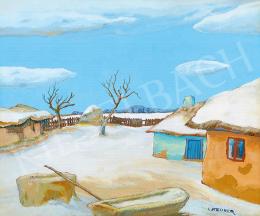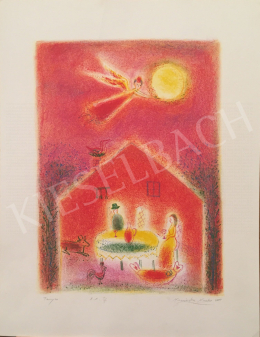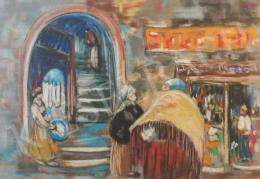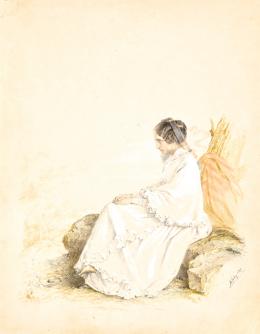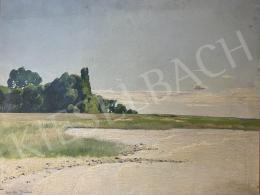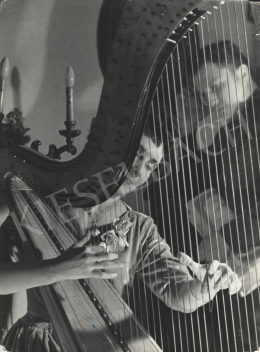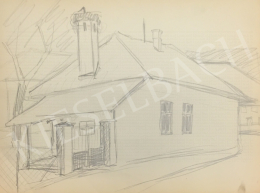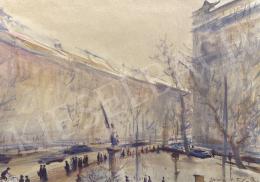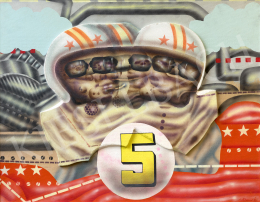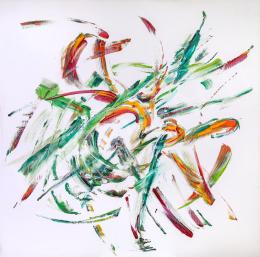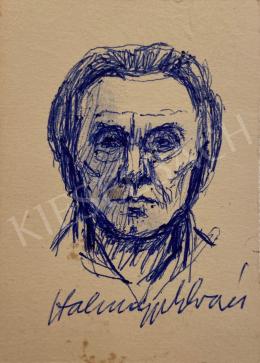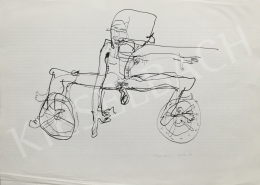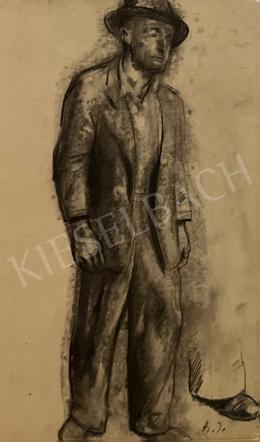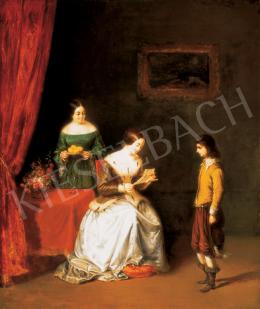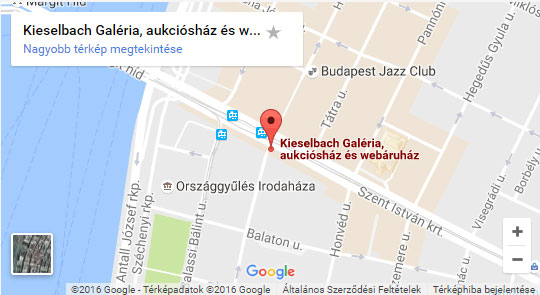Exhibited:
Exhibition No. LXXXII. of the Ernst Museum: Great Exhibition No. III. of the KUT (New Society of Artists). March / April, 1926 "Vigadó Kiosk. Price: 20 000 000 pengős")
Literature:
Béla Lázár: Vaszary János. Budapest, 1923
Jenő Bálint: The Art of János Vaszary. Budapest, 1927
János Vaszary. Introduction by Elek Petrovics, Aurél Kárpáti . Budapest, 1941.
Lenke Haulisch: Vaszary. Budapest, 1978.
"I can imagine, that in fifty years' time, young students will be given the following booklet: Hungarian Art Around 1925: János Vaszary. Since the great painter Benczúr no one has played such a central role in the events of art life than Vaszary does now. It would not be a sophisticated thing on history's part, if in ten years, it would not be him to dictate the matters of Hungarian Art." Máriusz Rabinovszky, the outstanding art historian wrote these words about Vaszary's reputation in 1927in the periodical called "Nyugat" (West). The "curious man of Hungarian painting" had been working for three decades then. His appreciation was expressed by successful exhibitions, dozens of respectful articles, two monographs by Béla Lázár and Jenő Bálint, and of course by his job at the Academy of Fine Arts with the true devotion of the young artist generation. However, his above mentioned legendary curiosity and his openness towards everything new urged him to change, renew his art - even at the apparent peak of his career. At the beginning of 1925 - after two decades of isolation - he went to Paris. Paris has been the synonym of modernism and being free from the fetters of the Academism since the end of the 19th century. Paris was the capital of Europe - or the world -, sometimes the capital of revolution, or money, but always that of fashion, style and, of course, arts.
Vaszary lived the meeting with this city as a revelation, even after the age of fifty. He wrote about this experience in 1927: "French culture has chief importance. The life-long, great effect is built upon the following components: the easiness of performance, the definite recognition of the painter's field, the permanent procession of authentic talents, the always-pulsating art life, and the foundation of the Independents, together with the great past of French culture." He was grasped by the leading artists of the École de Paris; Matisse, Duffy, Van Dongen. He apprehended the autonomous artistic values of their paintings, and the elegance of their performance. Vaszary's palette became lighter, his thick layers of paints were changed into Japanese-like gentle paint spots. The white basement instead of black, and the surface of the unpainted white cardboard create background, from which the characteristic blue, emerald green, red and yellow spots shine out. As this painting proves, Vaszary gave up the precise depiction of the bodies in relief for the decorative, spontaneous, easy expression. His homogenous spots are drawn round with his blue line, giving the composition an organic, graphical net. The trees above the terrace are still painted with the method he used before his trip to Paris, but the figures, depicted with sketch-like density illustrates the effect of his new experiences. The "Vigadó kiosk" is an extremely important representative of Vaszary's style of this borderline period; the characteristics of the black-basement and the white-basement period are present in the painting at the same time.
The exciting choice of the point of view is not only a gag, but represents Vaszary' s personality as well. He would like to depict the view with the coolness of the outsider. He shows the scene as if it were on a theatre stage. The visitors of the cafe play the role of an elegant comedy, or can be seen as exotic, colorful fishes of an aquarium.
As a result of his trip to Paris not only his style, but also his topics changed. The scenes of city life, the urban iconography had become significant in his work since then. He painted the frivolous atmosphere of streets, squares, balls, dances, the colorful world of the Danube esplanade and the cafés on it. The setting of this painting can be undoubtedly found out because of the statue-composition in the centre of the picture. "Children, Poring the gopher" by Károly Sennyei was placed in the center of the square before the building of the "Vigadó", on the terrace of the "Hangl Kiosk" in 1896. After 1945 it was removed, and was placed again on its original place a few years ago. Mór Hangl had been the bedroom-water of Ferenc Deák, the great Hungarian statesman. He first rented the Pesti Vigadó and its kiosk with terrace in 1870. The café had become the most popular place of the Danube esplanade and Budapest in a very short time. One reason of it was its extremely beautiful view to the Danube and to Buda. His well-known name - mentioned often in the famous cabarets of Budapest - remained the same under its new owners until 1945 when the building was destroyed.
The café, as the symbol of modern life, became an important motif of the urban iconography, thus, that of the art in the twentieth century. After his trip to Paris, Vaszary was very much interested in this topic. The "On the Terrace of the Café de la Paix" depicts a café scene as well.
"Budapest is the city of cafés. Who wants to depict the city, paint its cafés." Ödön Gerő wrote these words in his sociograph in 1891. According to him, the reason of this imperative sentence is the following: "The cult of café is the most vivid in Budapest in the whole world." The modern art is connected to this cult both abroad, and here in Hungary. The Dome, Rotonde in Paris meant the same as the Japán, Gresham, or the Simplon in Budapest. Naturally, the round onyx tables did not only listened to conversations about art. The smoky halls with pool tables created a possibility for a new, exciting form of social life. What made it so popular? The luxury of coffee (it was very expensive then), the "neither-at-home-nor-in-the-open-air" feeling, the publicity of class independence. And, of course, the frivolous hopes of meeting someone from the opposite sex. In this Vaszary painting - surprisingly enough - only women can be seen under the trees of the Vigadó Kiosk. The invasion of women needed only some decades in this area. In the twenties not only the cash desk lady and the members of the lady orchestras (who served the male guests in several ways) represented the female guests of the cafés. By this time there were two ways of being at a cafe for a lady. She could spend her time at the Ladies' halls, or could be there during the ladies' hours. One of Adolf Ágai's notes (from the book "Travel from Pest to Budapest") shows the popularity of it: "Women in cafés. It is neither a Western nor an Eastern tradition, but completely "Budapester"."
Tamás Kóbor, a characteristic novel-writer of the time wrote about this phenomenon, as if he wrote about Vaszary's painting:
"When - especially on Sunday afternoons - the flow of women floods the halls, the respectful feelings are over. Frivolous looks try to meet their looks without reserve, billiard cues get among their heads, silent curses can be heard, as the polite waiters put all the papers besides the female tables
The home became a place to live, the café became home. Girls meet boys there, and visits are replaced by dates in cafés. And these dates happen with the most outright publicity, making everyone think on the different possible combinations."
On one hand, Vaszary's painting erects a monument to the memory of the city's unique café culture, recalling one of the most popular café of the capital.
On the other hand, it is among the most significant pieces of the oeuvre; it represents the change in style after the trip to Paris, and is a predecessor of the Danube esplanade series of the thirties.
Péter Molnos






